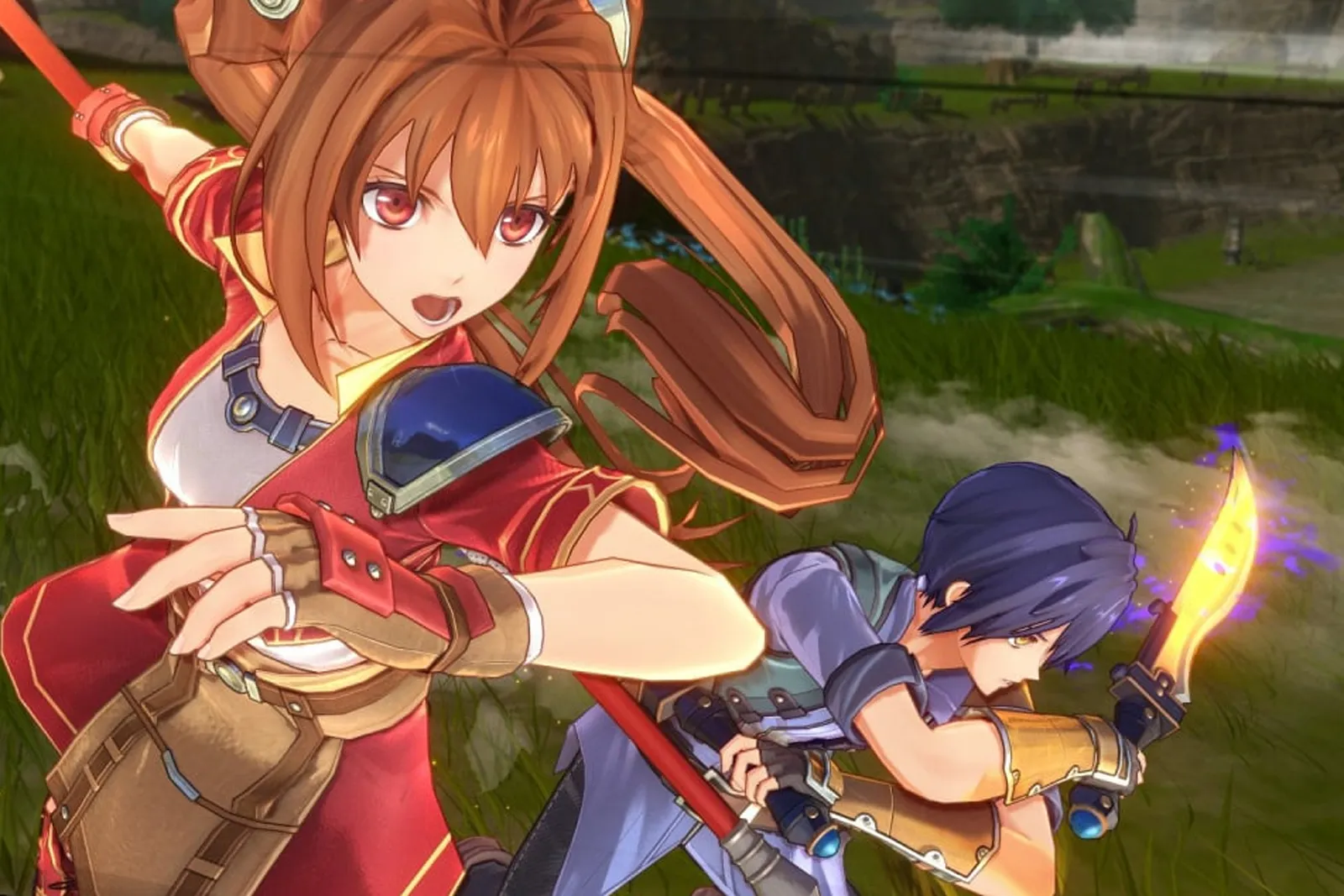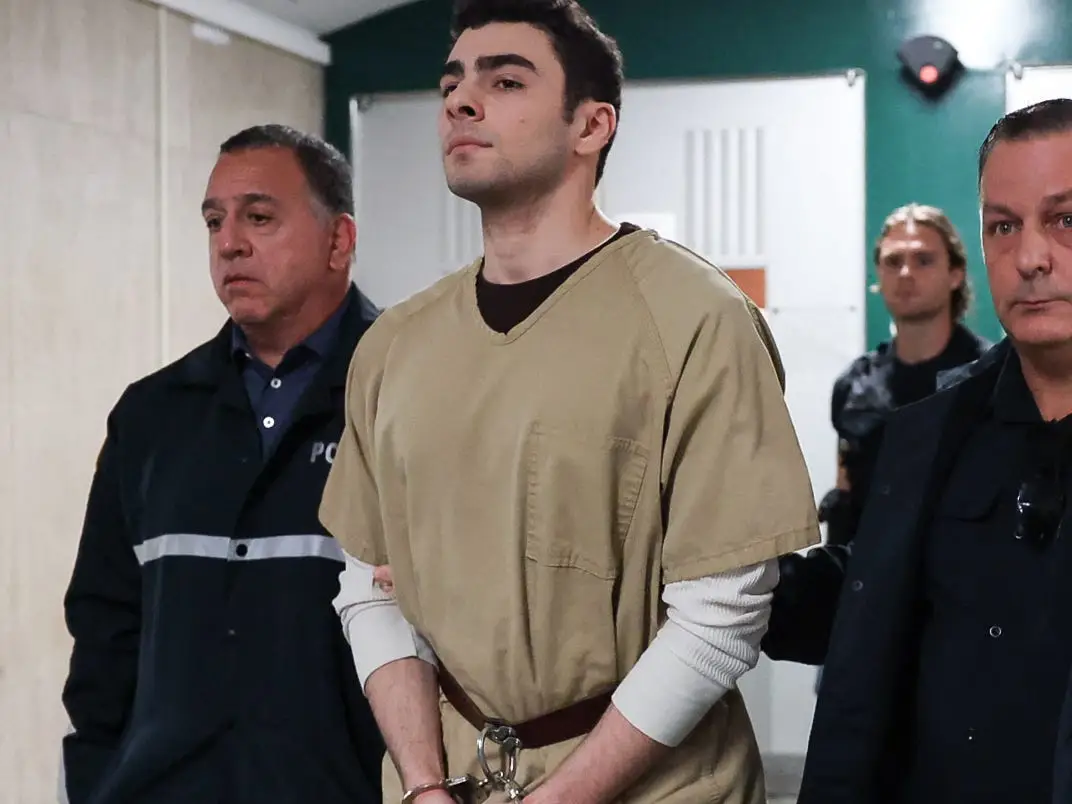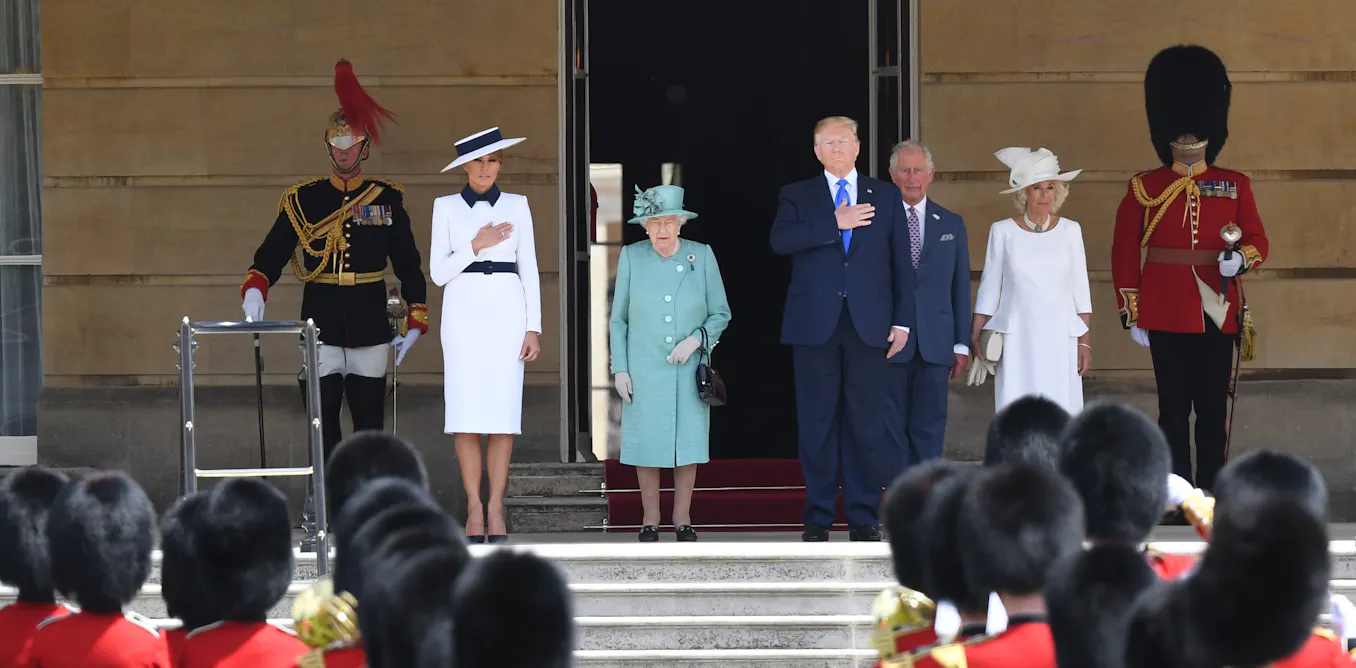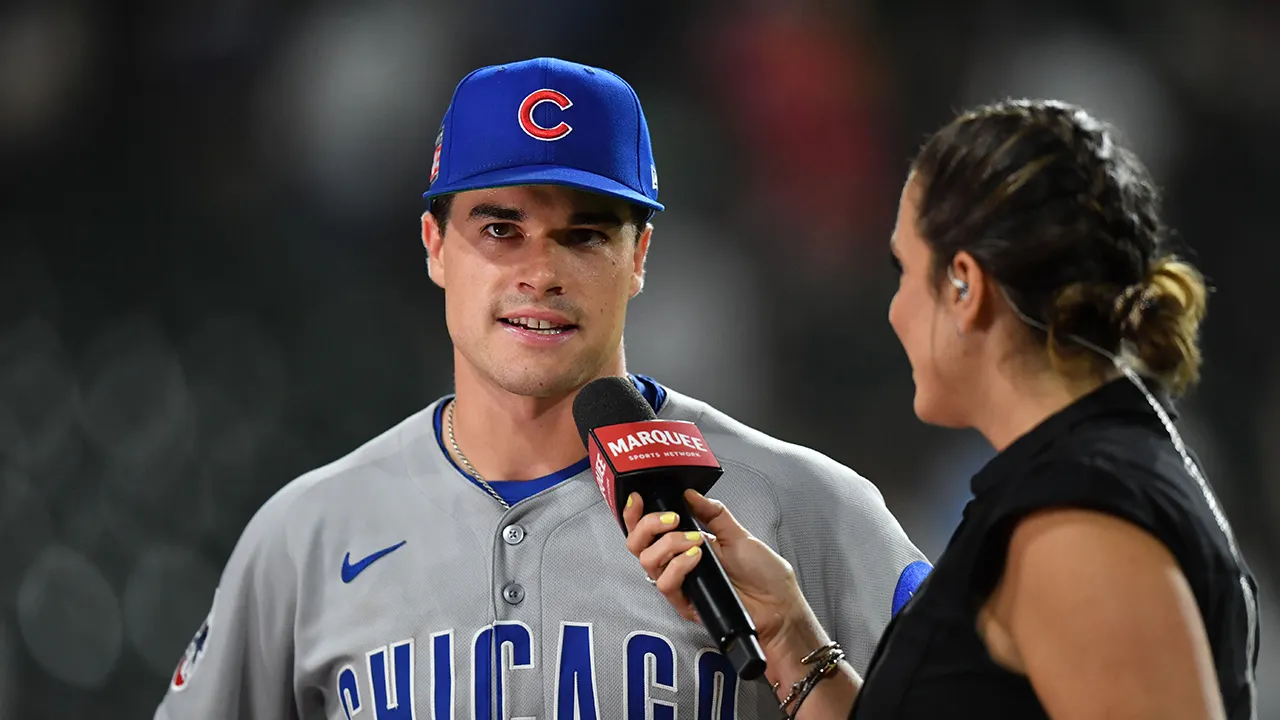By Christopher Cruz,George Yang
Copyright rollingstone

Skip to main content
September 30, 2025
‘Trails in the Sky 1st Chapter’ is more than an update, it’s a new lease on life for the franchise.
Hollywood has been trafficking in remakes for well over a century, swapping out casts and repackaging stories for each generation. This year, there was James Gunn’s Superman, which went back to the Golden Age well to kickstart a new DCU vision. There was also The Fantastic Four: First Steps, an attempt to reintroduce Marvel’s first family just a decade after a disastrous 2015 reboot. But while remakes are a dime a dozen for cinema, video games have long done the same, if not more.
What makes video game remakes stand out is the interactiveness of the medium. By using keyboards and controllers, players determine how a game unfolds, whether it’s by making certain choices or moving in a specific direction. With perpetual technological advancements, graphics have become more realistic, even movie-like, and control schemes have been overhauled to become more comfortable and accessible through iteration.
For gaming, remakes make sense: banking on nostalgia is a safe investment, and updates actually provide something tangible for a new age. As development costs continue to balloon, it’s easy to understand why studios have become risk-averse over the past decade, leaning harder than ever on repackaging even somewhat recent releases at full price.
But not all video game remakes are created equal. While some provide a more immersive experience than the original, others clearly lack any substantial improvements and are mostly content to be cynical cash grabs. Done right, remakes can be a fantastic way to introduce a franchise to a new audience, but also have to be transformative enough that veterans who’ve played the original come away with a different experience.
Capcom’s trifecta of Resident Evil 2 (2019), Resident Evil 3 (2020), and Resident Evil 4 (2023) have been viewed as the gold standard of video game remakes. By ditching the old PS1 fixed camera angles and transitioning to a fully controllable 3D camera, the Resident Evil 2 and 3 remakes gave older players entirely reimagined experiences that felt on par with modern sensibilities. Improved lighting techniques in the perpetually dark Raccoon City police station made for a vastly scarier and immersive atmosphere than the pixelated haze of before. Having more direct control over the camera also gave players more agency, placing them closer to the horror.
Editor’s picks
The 250 Greatest Albums of the 21st Century So Far
The 100 Best TV Episodes of All Time
The 500 Greatest Albums of All Time
100 Best Movies of the 21st Century
However, some developers have gotten cavalier with what constitutes a remake — with Naughty Dog’s The Last of Us series being a prime example. The Last of Us Part I, which came out in 2022, was billed as a full technical overhaul of the 2013 PS3 game with new graphical enhancements and facial animations. But it was largely the same exact game: same story, same combat. The only noteworthy addition was the excellent suite of accessibility features that have been a staple of Sony’s recent first-party games.
That’s fine, but then came 2024’s The Last of Us Part II Remastered, which left audiences wondering why a four-year-old game was being reimagined at all. Outside of a new roguelike mode and some commentary tracks, the remaster provided barely noticeable upgrades over a title that was already playable on PS5 through backwards compatibility. Sony’s double-dipping is indicative of a larger trend, where the terms remake and remaster begin to blur — but the steep price tag remains constant.
A remake or remaster?
But what’s the difference between a remake and remaster of a video game? Generally, a “remaster” takes the original title and adds modern touches to it like better graphics, updated controls, and quality-of-life features, such as the ability to save your progress anywhere instead of relying on a designated save point. A “remake” is completely built from the ground up using current technology, often introducing completely new visual design and gameplay mechanics to appeal to modern audiences.
Related Content
‘Hades II’ Is a Lavishly Excessive Sequel, Fit for the Gods
‘Ghost of Yōtei’ Is an Emotionally Gripping and Meditative Samurai Revenge Saga
‘Pokémon Legends: Z-A’ Shows a More Modern Way to Catch ‘Em All
Final Fantasy Tactics’ Themes of Class and Resistance Hit Way Harder in 2025
Remasters often come with a slightly cheaper price tag. Nintendo, however, is notorious for selling these rehashes at full price in between its console generations. This includes games like Mario Kart 8 Deluxe on Switch, and the Switch 2 versions of Zelda: Breath of the Wild and Tears of the Kingdom. To give credit where it’s due, Nintendo sometimes adds substantial new content to its remasters, such as Super Mario 3D World + Bowser’s Fury and Kirby and the Forgotten Land + Star-Crossed Lovers.
While studios clearly differentiate the remakes and remasters most of the time, some like to toe the line between them. Two huge remakes of this year, Metal Gear Solid Delta: Snake Eater and Final Fantasy Tactics: The Ivalice Chronicles, sit at near opposite ends of this spectrum.
Metal Gear Solid Delta opts to be a 1:1 recreation of the original game.
Billed as a “remake,” Delta is virtually a 1:1 recreation of the original 2004 PS2 game, which works as a double-edged sword. It invokes nostalgia alright, but it doesn’t fully take advantage of modern technology or design. Players will sit through needless loading screens between areas that obviously shouldn’t even exist; nothing about Metal Gear’s world is so physically taxing that it would necessitate a mid-stage buffer in 2025.
Konami has also solved this issue before with its own Silent Hill 2 remake just last year. Delta is faithful to a fault, an excuse to use a new game engine as a selling point while still producing nearly the exact same product. Its producers claim the goal is to introduce the series to new audiences, but 2023’s Metal Gear Solid: Master Collection already includes the original Metal Gear Solid 3, and it’s available on all modern platforms.
Conversely, The Ivalice Chronicles has had a tumultuous development period. Director Kazutoyo Maehiro explained that the original source code for Final Fantasy Tactics was lost, forcing the development team to literally rebuild the entire game by utilizing old retail copies and smartphone ports of the original. The team even resorted to fan-made wikis and databases in order to recall its gameplay mechanics. The end result was technically a “remake,” but on the surface looks like a remaster of the 1997 original by retaining the classical look of sprite-based graphics. And unlike Snake Eater, the original isn’t easily accessible, making the endeavor much more justifiable.
Putting remakes on modern hardware is vital to introducing old franchises to new audiences. Square Enix’s upcoming Dragon Quest 1+2 HD-2D (out Oct. 31) is a prime example. These first two entries originated on the NES, and received several smartphone overhauls over the years, but those never left Japan. However, the new version also incorporates the company’s lauded HD-2D visual art style, that combines retro pixel art with modern 3D environments, creating a unique diorama look. It allows Square Enix to capture nostalgia by presenting it with a similar art style that the 1980s originals, but also adds in some quality-of-life features to make it more palatable to play by modern standards.
Released last month, Microsoft’s Gears of War: Reloaded is essentially the same game as the 2006 original, but its release this time is much more notable — it’s the first Gears of War game available on PlayStation. Microsoft has been slowly bowing out of the console wars by putting more of its previously Xbox-exclusive games on rival platforms; with the Gears of War franchise being a pillar of Xbox’s brand identity, Reloaded’s serves a slick entry point to introducing the series to a whole new ecosystem.
Trails to success
But in all of 2025, there’s one remake that stands heads and shoulders above the rest: Falcom’s Trails in the Sky 1st Chapter (FC), released on Sept. 19 for PC, PS5, and Nintendo Switch. It’s a ground-up reimagining of the PlayStation Portable RPG, The Legend of Heroes: Trails in the Sky, and is the first game that kicks off the closest thing the industry has to an interconnected Marvel Cinematic Universe. It’s the Iron-Man (2008) of video games.
Even though prettier visuals and updated gameplay features are crucial components of a good remake, the Trails in the Sky FC accomplishes a specific and undervalued feat by giving a second life to a cult-favorite franchise that missed out on international appeal due to localization issues.
Video game localization is the process of taking a game from a certain region and translating its original language text, such as Japanese, and translating it so that the game is accessible to other regions around the world. The franchise has had a shaky localization history in the West. The original PSP version of Trails in the Sky was released outside of Japan by studio XSeed in 2011. While it received critical acclaim for its phenomenal worldbuilding, it didn’t sell well. The herculean effort to translate its gargantuan script didn’t pay off and as a result, the outlook of XSeed localizing Trails in the Sky Second Chapter (SC) and Third Chapter (TC) remained grim for years. Fortunately, they were eventually released on Steam in 2015 and 2017, respectively.
The series has also switched worldwide publishers and localizers several times. NIS America took the reins of publishing the third and fourth Trails of Cold steel games after XSeed brought over the first two. NISA America eventually went on to publish later entries in the Trails series, including the Crossbell duology and the Trails through Daybreak arc, up until this Trails in the Sky remake.
Trails in the Sky FC isn’t just an aesthetic overhaul; it breathes new life into a once-niche game.
A decade or so ago, the release dates for the Japanese versions of games and the global versions were staggered, with companies having to translate it after the Japanese release. However, that process since has been much more streamlined and now most major Japanese games today have the same release date globally. That’s not the case with Trails, as Falcom is a much smaller company compared to the likes of Japanese giants such as Square Enix and Capcom. The Crossbell duology consisted of two PSP games from 2011 and 2012, respectively, and weren’t officially released outside of Asia until over a decade later.
Similar to the development of The Ivalice Chronicles, NIS America had to rely on fan communities to speed up the localization process, NIS America partnered with The Geofront, a Trails fan-run community that translated the Crossbell games. NIS America used Geofront’s translation as a foundation and edited it for the duology’s official localization. After 11 years, the two games finally reached gamers’ hands in the West.
The bumpy localization schedules of these games often caused gamers to wonder if they even needed to play the previous Trails games to understand the next. The short answer is yes, up to a point. Trails into Reverie required players to have gone through every single entry beforehand in order to even have a semblance of understanding of what was going on. All of the main characters from Sky, Crossbell, and Cold Steel were involved in its story. Imagine if someone watched Avengers: Infinity War and Endgame without having seen the previous MCU movies.
The original Sky trilogy is stuck on PSP and Steam, which is why the FC is such an important milestone for the series. It gives newcomers an accessible way to experience the very first game in the series and for fans to definitively say, “Yes. You can start with this one.”
Coming full circle
What makes FC a great remake is how transformative it is over the original, yet retains its spirit. It builds on the gameplay mechanics that the new and recent entries introduced, as well as presents visual and audio overhauls, which you’d expect from a remake anyway.
Most importantly, though, is that FC provides an entry point for new fans to check out the origins of the Trails series. Given the franchise’s rocky localization history, most existing fans have actually started with one of the more recent games in the series that have more modern gameplay sensibilities and are available on consoles. As a result, going back to the original Trails in the Sky would be a jaggering transition: playing a much older game with dated mechanics and doesn’t look as pretty. And that’s assuming you play on PC, or even less likely nowadays, own a PSP or Vita. FC solves all of that and more.
The battle system has seen the biggest improvements. The original’s combat was purely turn-based, but FC’s battle system is a hybrid between turn-based and real-time action that was introduced in Daybreak. Characters can attack and swing at enemies with basic attacks, essentially peppering them with some damage before transitioning into where the real meat and potatoes of the combat system is: the turn-based portion.
It was rather barebones in Daybreak, and was marginally improved upon in its direct sequel. FC takes it another step further. It doesn’t alienate the core Trails fanbase by completely getting rid of turn-based combat like Final Fantasy VII Rebirth did, but also appeals to a new crowd that wants a bit of real-time gameplay action.
The series’ artstyle has dramatically improved over the years. Instead of going for a hyper-realistic graphics like the recent Final Fantasy games, FC opts for an anime aesthetic that’s crisp and pristine, with the cel-shaded art style bursting with color. FC’s visuals are the best the series has been thus far. The movement of 3D models no longer look rigid and battle animations are stylish as ever. The original game utilized sprites, so having 3D models is a huge step up. In rare instances of loading screens, they have the characters’ original PSP sprites walking in the lower right corner — an homage to the original game, adding a charming and nostalgic touch.
FC’s presentation is also made much more lively by the new voice acting, with a majority of the script being voiced while the original only had voice acting for battle lines. Character performances really help sell the camaraderie between the entire cast. What’s even more impressive is that the English voice cast has been largely retained from the original’s, who also voiced them in later entries whenever their respective characters made cameos or were involved in the story in some way.
Trending Stories
Bad Bunny’s Super Bowl Halftime Show Will Make History for Being Entirely in Spanish
Body Found in D4vd’s Tesla: Cops Explain Lack of Named Suspects, Charges
Supreme Court Ethics Issues Trace to John Roberts’ ‘Original Sin,’ New Book Alleges
Madonna’s Revelation After Coma Led to Reunion With Her Brother Before His Death
Trails in the Sky 1st Chapter is a shining example of what a video game remake should be. It reimagines a foundational RPG and makes it more widely available and appealing to contemporary audiences, along with having enormously improved gameplay and presentation over its original. One can scorn remakes as nothing more than a way to funnel more money out of gamers for sometimes indistinguishable experiences.
FC isn’t entirely free from that criticism, as new fans will then buy more Trails games, including the original Trails in the Sky. Ironically, that’s exactly what needs to happen. But FC is a remake done right and is a compelling example of how to give a studio’s underappreciated franchise the rejuvenation it needs.
Is the Future of Viral Left Podcasting These Two Hilarious Red State Moms?
Loud & Proud
Gen Z Is Being Crushed by Anxiety. One Teen Is on a Mission to Help Them Cope
Worried Sick
Jack Korngold
‘Hades II’ Is a Lavishly Excessive Sequel, Fit for the Gods
Christopher Cruz
Fat Bear Week Is Back Just in Time to Reinstill Hope in America
‘It’s Money and Greed’: Oil, Politics, and Dead Cows in a Small Texas County
Mitch Moxley
Go to PMC.com
Most Popular
Liev Schreiber, Mayim Bialik, Debra Messing Among 1,200 Industry Names Rejecting Israeli Film Boycott in New Open Letter: It ‘Advocates’ for the ‘Erasure of Art’
Steve McQueen’s Granddaughter Sues Lawyer over $68 M. Jackson Pollock Painting
‘Dancing With the Stars’ Ends One-Hit Wonders Night With a Four-Way Tie for Top of the Leaderboard: See All the Scores, Who Went Home
Insider Claims Nicole Kidman & Keith Urban’s Separation Is ‘One-Sided’
You might also like
Benedict Cumberbatch Says Taking on ‘Male Emotion, Grief, Family’ Is a ‘Good Thing for Culture’ as He Picks Up Zurich’s Golden Eye Award
19 hours ago
Nicole Kidman Was Reportedly ‘Blindsided’ When Keith Urban Confronted Her Over Marriage Issues
3 hours ago
KnitWell CEO Lizanne Kindler Joins BCRF Board
4 hours ago
SAG-AFTRA Weighs in on AI Firestorm: ‘To Be Clear, ‘Tilly Norwood’ Is Not an Actor’
3 hours ago
Inside Blueprint’s New Model: NIL Rev-Share Deals With Schools
14 minutes ago
Rolling Stone is a part of Penske Media Corporation. © 2025 Rolling Stone, LLC. All rights reserved.
Powered by WordPress.com VIP



